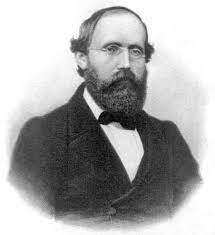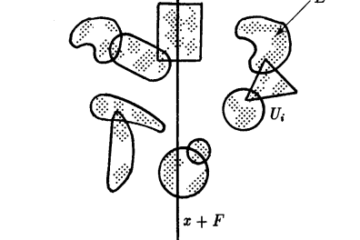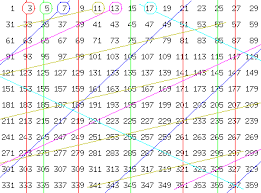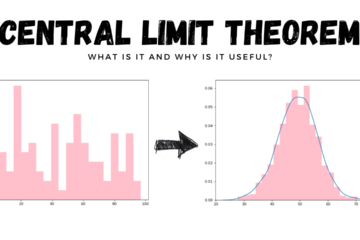
for, externally, in the binding forces acting on it.
Understanding these basic definition and statement~
- Let $X$ be a set. A function
$$
d: X \times X \rightarrow \mathbb{R}^{+}
$$
is called a metric on $X$ if the following hold:
(M1) $d(x, y)=0 \quad \Leftrightarrow \quad x=y$,
(M2) $d(x, y)=d(y, x)$ for all $x, y \in X$ (Symmetry), and
(M3) $d(x, y) \leq d(x, z)+d(z, y)$ for all $x, y, z \in X$ (Triangle Inequality).
If $d$ is a metric on $X$, then $(X, d)$ is called a metric space. - Let $(X, d)$ be a metric space. A sequence $\left(x_{n}\right) \subseteq X$ converges to an element $x \in X$ if for all $\varepsilon>0$ there exists an $N \in \mathbb{N}$ such that $d\left(x_{n}, x\right)<\varepsilon$ whenever $n \geq N$
- A sequence in a metric space $(X, d)$ is a Cauchy sequence if for all $\varepsilon>0$ there exists an $N \in \mathbb{N}$ such that $d\left(x_{n}, x_{m}\right)<\varepsilon$ whenever $n, m \geq N$.
- A metric space $(X, d)$ is called complete if every Cauchy sequence in $X$ converges to an element of $X$.
Try the following problem to test yourself!
Show that $B(x ; r)$ in a Euclidean space is convex.
Let $y_{1}, y_{2} \in B(x ; r)$ and set $z=\alpha y_{1}+(1-\alpha) y_{2}$, where $0 \leq \alpha \leq 1$. Then we have
$$
\begin{aligned}
d(x, z) &=d\left(x, \alpha y_{1}+(1-\alpha) y_{2}\right) \
& \leq d\left(x, \alpha y_{1}\right)+d\left(x,(1-\alpha) y_{2}\right) \
&=\alpha d\left(x, y_{1}\right)+(1-\alpha) d\left(x, y_{2}\right) .
\end{aligned}
$$
Since $y_{1}, y_{2} \in B(x ; r)$, we have that $d\left(x, y_{1}\right)<r$ and $d\left(x, y_{2}\right)<r$, which implies $d(x, z)<r$, and therefore $z \in B(x ; r)$.
Given a metric space $(X, d)$ and a nonempty bounded subset $A$, the real number $\delta(A):=\sup {d(x, y): x, y \in A}$ is called the diameter of $A .$ It is clear that $\delta\left(S\left(x_{0} ; r\right)\right) \leq 2 r$
Show that equality is not always valid.
Let $(X, d)$ be a discrete metric space where $X$ has more than one element. Then
$$
S\left(x_{0} ; 1\right)=X \backslash\left{x_{0}\right} \quad \text { and } \quad \delta\left(S\left(x_{0} ; 1\right)\right)=1<2 \text {. } $$ For $r>0$ and $r \neq 1, S\left(x_{0} ; r\right)=\emptyset$ and $\delta\left(S\left(x_{0} ; r\right)\right)$ is not defined.
Let $\left{I_{n}\right}$ be a sequence of bounded nonempty closed subsets of a complete metric space $(X, d)$ such that
(a) $I_{n+1} \subseteq I_{n}$, for all $n \geq 1$;
(b) $\lim {n \rightarrow \infty} \delta\left(I{n}\right)=0$, where $\delta(A)=\sup {d(x, y): x, y \in A}$.
Show that $\bigcap_{n \geq 1} I_{n}$ is not empty and reduced to a single point.
Since $\left{I_{n}\right}$ is a sequence of nonempty sets, form a sequence $\left{x_{n}\right}$ with $x_{n} \in I_{n}$ for all $n \geq 1 .$ We claim that $\left{x_{n}\right}$ is a Cauchy sequence in $X .$ Indeed, let $\varepsilon>0$ and since $\lim {n \rightarrow \infty} \delta\left(I{n}\right)=0$, there exists $n_{0} \geq 1$ such that for all $n \geq n_{0}$ we have $\delta\left(I_{n}\right)<\varepsilon .$ Let $m \geq n \geq n_{0}$, then $x_{n}, x_{m} \in I_{m}$ because $\left{I_{n}\right}$ is decreasing. Then
$$
d\left(x_{n}, x_{m}\right) \leq \delta\left(I_{n}\right)<\varepsilon
$$
This proves our claim. Since $X$ is complete we conclude that $\left{x_{n}\right}$ is convergent. Let $x \in X$ be its limit. We claim that $\bigcap_{n \geq 1} I_{n}={x}$. Indeed, for any $n \geq 1$ and any $m \geq n$ we have $x_{m} \in I_{n}$.
Since the subsequence $\left{x_{m}\right}_{m \geq n}$ also converges to $x$ and $I_{n}$ is closed, we conclude that $x \in I_{n}$. Since $n$ was arbitrary, we get $x \in \bigcap I_{n} .$ Hence $\bigcap I_{n}$ is not empty. Let $y \in \bigcap I_{n} .$ By definition of the diameter, we get $d(x, y) \leq \delta\left(I_{n}\right)$ for all $n \geq 1$. Since $\lim {n \rightarrow \infty} \delta\left(I{n}\right)=0, \begin{aligned}&n \geq 1 \&\text {, we get } d(x, y) \leq 0 \text { or }\end{aligned}$
$d(x, y)=0$ which implies $y=x .$ This completes the proof of our statement.

复分析代写,数学代写Riemann surface请认准UprivateTA™. UprivateTA™为您的留学生涯保驾护航。
Fourier analysis代写
离散数学代写
Partial Differential Equations代写可以参考一份偏微分方程midterm答案解析


